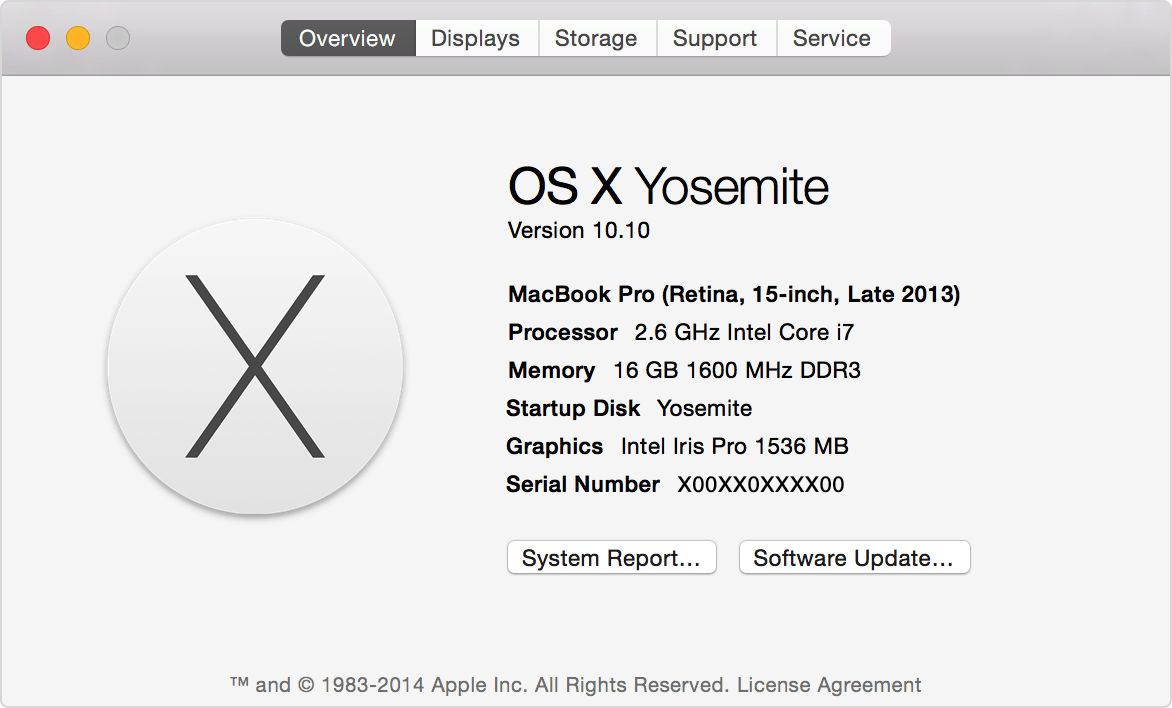
- HOW TO FREE UP SPACE ON MAC STARTUP DISK OS X YOSEMITE MAC OS X
- HOW TO FREE UP SPACE ON MAC STARTUP DISK OS X YOSEMITE INSTALL
- HOW TO FREE UP SPACE ON MAC STARTUP DISK OS X YOSEMITE ARCHIVE
- HOW TO FREE UP SPACE ON MAC STARTUP DISK OS X YOSEMITE FREE
HOW TO FREE UP SPACE ON MAC STARTUP DISK OS X YOSEMITE MAC OS X
HOW TO FREE UP SPACE ON MAC STARTUP DISK OS X YOSEMITE ARCHIVE
Archive old filesĪrchive move, copy and delete, or backup and remove files you do not use regularly to CD or another backup medium. E mptying the applications Trash may delete its contents immediately or move its contents to your personal Trash, which you can then empty as noted above. Some applications, such as iPhoto® and Mail, have their own Trash, spearate from the Trash seen in the Dock. In Finder, select Finder > Empty Trash or, under Mac OS X 10.3 or later, you can also select Finder > Secure Empty Trash.ĭo not use the Trash as a temporary storage area: only put an object in the Trash if you are sure it is no longer needed. Empty the TrashĪs obvious as it may sound, some folks regularly Trash files but neglect to periodically empty the Trash.
HOW TO FREE UP SPACE ON MAC STARTUP DISK OS X YOSEMITE FREE
You can employ any of the following tips to increase the free space available on your Mac OS X startup disk without altering your hardware. In the General pane, the Capacity, Available (free space), and space Used on your startup disk will be displayed, as seen in the following screen shot:
HOW TO FREE UP SPACE ON MAC STARTUP DISK OS X YOSEMITE INSTALL
While you could replace your current hard drive with a larger model, or install a second internal hard drive if your Mac will support such, the following tips will help you to free some space without changing your hardware. This extract from a chapter of our book Troubleshooting Mac® OS X describes several ways to free-up space on your Mac OS X startup disk, also known as your Mac OS X boot volume. You’ll also need access to a Mac running Yosemite that includes an existing Recovery HD partition.Freeing space on your Mac OS X startup disk


To create a recovery disk, you need a USB flash drive or an external hard drive that has at least 1GB free space. The simplest solution is to put an external USB drive or SD card into service using the OS X Recovery Disk Assistant. However, if your Mac is not online, or if you’ve upgraded an older Mac to Yosemite, that method won’t work. This recovery system is stored on a hidden partition on your Mac’s hard drive - but what if something happens to your hard drive? Well, if your Mac can’t find the recovery partition but it’s connected to the Internet via either Wi-Fi or a network cable, it’ll start the OS X Internet Recovery Feature.

Start your Mac and hold Command + R to go into recovery mode, from which you can start Disk Utilities, restore from a Time Machine backup, or perform a clean install. OS X 10.7 Lion did away with recovery disks, and these days, Apple provides a built-in recovery system within Yosemite.


 0 kommentar(er)
0 kommentar(er)
